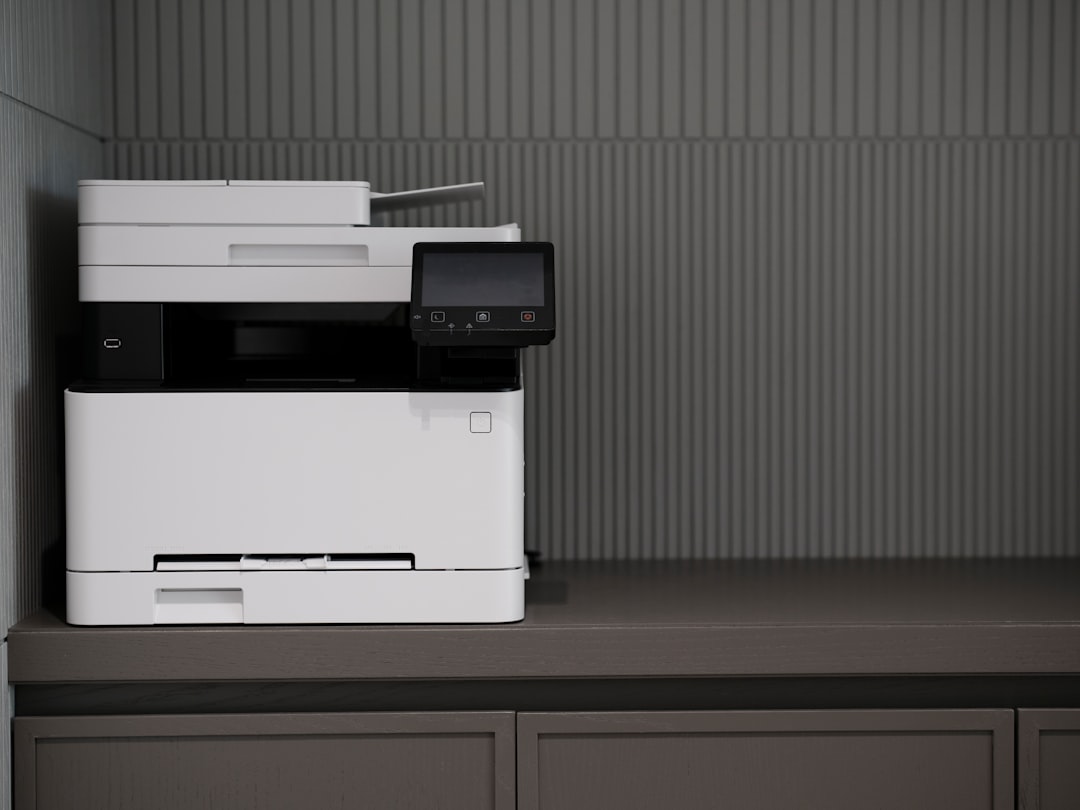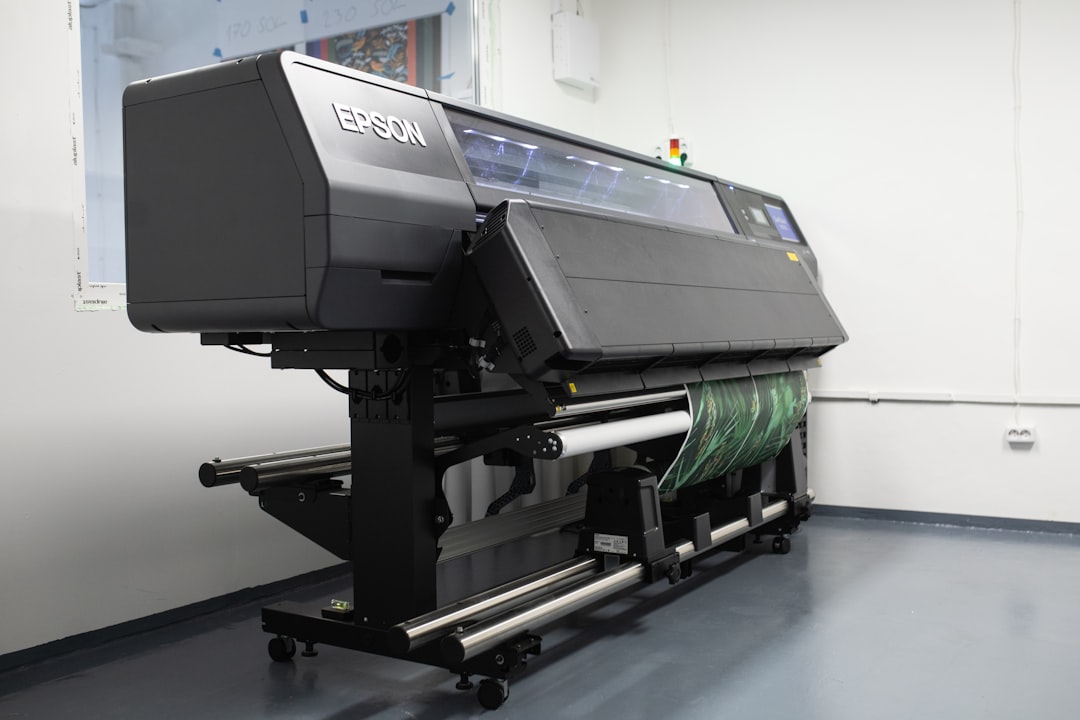
Supercharge your lead generation with a FREE Google Ads audit - no strings attached! See how you can generate more and higher quality leads
Get My Free Google Ads AuditFree consultation

No commitment
Supercharge your lead generation with a FREE LinkedIn Ads audit - no strings attached! See how you can generate more and higher quality leads
Get My Free Google Ads AuditFree consultation

No commitment
Supercharge your lead generation with a FREE Meta Ads audit - no strings attached! See how you can generate more and higher quality leads
Get My Free Google Ads AuditGet My Free LinkedIn Ads AuditGet My Free Meta Ads AuditFree consultation

No commitment
Supercharge your lead generation with a FREE Google Ads audit - no strings attached! See how you can generate more and higher quality leads
Get My Free Google Ads AuditFree consultation

No commitment
In today's competitive landscape, printing supply companies face significant challenges in enhancing visibility, attracting customers, and driving sales. One of the critical issues is the loss of high-value prospects due to incomplete tracking, leading to missed opportunities. Leveraging Google Ads represents a powerful middle-funnel tactic that connects online and offline marketing efforts, addressing these challenges by identifying anonymous visitors and ensuring precise targeting of real decision-makers. This guide explores how to capitalize on Google Ads for printing supply companies, focusing on precision targeting, ROI measurement, and cross-channel integration to amplify marketing impact.

Modern printing supply companies must embrace a data-driven paid search approach to consistently generate leads and scale revenue. Sophisticated Google Ads strategies tailor targeting and creative messaging to match the unique intent signals of B2B and B2C printing buyers. By leveraging account-level insights, marketers can prioritize high-value opportunities and avoid wasted spend on low-intent audiences.
One persistent challenge in the printing supply industry is the inability to accurately identify and act on engaged accounts. This results in generic follow-ups and missed windows of opportunity. Advanced platforms now enable marketers to identify website visitors, allowing sales teams to prioritize outreach when interest is highest.
Integrating Google Ads with CRM and marketing automation systems streamlines the lead management process. When a prospect interacts with high-value content—such as a toner compatibility calculator or a custom quote form—automated workflows can immediately trigger personalized follow-up tasks for sales. For strategies that ensure no opportunity slips through the cracks, printing supply companies can improve overall pipeline velocity and sales efficiency.
Landing page experience is another core driver of success, especially for printing supply buyers who often require complex product information and instant pricing. Marketers should ensure that creative messaging and offers in their ads match the content and conversion paths presented on landing pages. Tools that analyze visitor behavior can help refine these pages, identifying drop-off points and optimizing for the highest-converting layouts.
Continuous performance optimization is essential for maintaining profitable ROI in a competitive printing supply market. Automated reporting and attribution models allow marketers to track online conversions as well as offline sales that result from phone or in-person inquiries. For more on the most effective digital ad types for print shops, explore this overview of digital ad types.
Finally, a holistic marketing ecosystem is built on cross-channel integration. By syncing enriched lead and account data from Google Ads with CRM and sales platforms, printing supply marketers enable more efficient retargeting, nurture, and upsell campaigns. If you’re ready to maximize lead generation efficiency and gain full visibility into campaign impact, get started for free with Sona today.
Printing supply companies operate in a landscape where customer acquisition often hinges on identifying the right buyers amid a crowded market. Modern digital marketing requires precision: procurement heads, facility managers, and business buyers actively search for specialized printing solutions with unique requirements. To capture this demand, companies need data-driven targeting and campaign execution that anticipate and respond to nuanced purchasing signals.
Complex audience targeting is a persistent challenge. Procurement professionals and office managers do not always follow predictable paths, so intent-based campaign segmentation is essential. By integrating real-time behavioral insights into Google Ads targeting, teams can pinpoint high-converting accounts while reducing wasted ad spend. For a practical overview of the most effective digital ad types for print shops, see this guide.
Higher margin projects, such as bulk orders or contracts for eco-friendly materials, demand a marketing strategy that goes beyond generic outreach. Google Ads enables printing suppliers to attract new, high-value customers by focusing on relevant product attributes and purchase motivations. Unified sales and marketing data ensures that these campaigns are informed by actual opportunity signals, allowing for dynamic prioritization of top prospects and more efficient resource allocation.
Printing supply businesses must also react quickly to urgent requests and seasonal spikes in demand. Immediate demand response is only possible when online and offline interactions are synchronized. By connecting website visitor activity, inbound calls, and offline sales engagements, revenue teams can generate timely, actionable responses to inquiries and convert urgent needs into sales.
Expanding into new markets, whether geographic regions or industry verticals, requires precision targeting. Google Ads provides the flexibility to launch and optimize campaigns for specific regions or buyer segments, using data to refine targeting and creative in real time. Technologies that unify sales and marketing signals further enhance this process, ensuring expansion efforts are based on accurate, up-to-date intelligence.
Integrated data analysis is crucial for continuous improvement. With closed-loop measurement across all marketing and sales channels, printing supply companies gain a comprehensive view of performance. This enables more informed decision-making, reveals new growth opportunities, and drives ongoing optimization of customer acquisition and retention strategies. To see the benefits for yourself, get started for free with Sona.

Ready to optimize your ad campaigns and unlock new B2B revenue? Get started for free with Sona.

Printing supply companies can rapidly accelerate growth by targeting untapped demand and refining their advertising approach. Expanding reach requires more than just scaling budgets; it involves a disciplined focus on underserved niches, competitive gaps, and high-value placements that align with business goals. For actionable frameworks, explore the latest marketing strategies designed for B2B growth.
Growth in the printing supply sector is driven by precise targeting, a deep understanding of buyer intent, and the ability to seamlessly connect insights across sales and marketing channels. Companies that harness these strategies consistently outperform peers in both lead generation and long-term customer value. Ready to accelerate your pipeline? Get started for free with Sona.

Audience segmentation is the foundation of high-performing Google Ads for printing supply companies. When you segment audiences by business type, purchase intent, and stage in the buying journey, your campaigns become more precise and relevant. This approach enables revenue teams to focus budget and messaging on the segments most likely to convert, maximizing ROI from every ad dollar. For further guidance on segmenting and activating campaign audiences, explore real-time audience insights.
Ready to maximize your segmentation strategy and campaign ROI? Get started for free with Sona.

| Industry | Keyword | Monthly Search Volume | Competition Level | Low Bid | High Bid |
| Printing Supply Companies | all american screen supply | 10 | MEDIUM | 11.05 | 100.07 |
| Printing Supply Companies | ryonet screen printing supplies | 10 | MEDIUM | 1.75 | 30.11 |
| Printing Supply Companies | all american print supply company | 30 | HIGH | 7.27 | 102.33 |
| Printing Supply Companies | commercial printing supplies | 40 | LOW | 1.74 | 4 |
| Printing Supply Companies | printing supply companies | 70 | MEDIUM | 1.47 | 6.75 |
| Printing Supply Companies | print shop supplies | 90 | MEDIUM | 1.61 | 5.51 |
| Printing Supply Companies | printing on poster board | 5400 | HIGH | 0.88 | 5.91 |
Precision in keyword strategy drives exceptional results for printing supply companies using Google Ads. By focusing on terms that signal clear buying intent, marketers can efficiently reach businesses and organizations seeking specific printing supplies, hardware, or services. This approach limits wasted spend and ensures every click is more likely to convert into a qualified lead or sale. For a deeper dive into tactics, explore the most effective digital ad types for print shops and browse our blog for advanced Google Ads strategies tailored to the printing industry.
A robust keyword architecture blends these elements to maximize both reach and efficiency. The most effective printing supply marketing strategies use unified data and intent signals to continuously refine keyword lists, push budget toward the highest-converting queries, and keep campaigns responsive as buyer behaviors shift. This ongoing optimization sets high-performing print shop advertising apart from generic PPC for print companies, delivering measurable improvements in qualified lead volume and marketing ROI. To see these tactics in action and elevate your results, get started for free with Sona.

A precise campaign execution framework empowers printing supply companies to achieve stronger results from every marketing dollar. By focusing on granular targeting, customized messaging, and rigorous measurement, marketing teams can outpace competitors and build a repeatable, scalable pipeline. For more actionable best practices, explore the Sona marketing playbooks, which detail proven frameworks for B2B demand generation.
In this guide, you will find a structured approach for executing Google Ads for Printing Supply Companies, adapting proven PPC strategies to the unique needs of screen printing suppliers, digital printing businesses, and toner cartridge distributors. Each step is designed for revenue teams seeking to unify data and maximize demand generation. If you’re ready to take your marketing to the next level, get started for free with Sona.
Building robust keyword lists is foundational for driving qualified traffic in printing supply marketing. Start by clustering keywords according to your core services, such as “screen printing equipment,” “digital printing supplies,” or “wholesale toner cartridges.” For a practical overview of the most effective digital ad types for print shops, see popular digital ads for print shops. Supplement your strategy by using intent signals to pinpoint high-intent prospects and further refine your keyword clusters for maximum impact.
Negative keywords are essential for curbing wasted spend. Exclude terms that attract non-commercial or unrelated traffic, such as “DIY screen printing kits,” “free print templates,” or “artistic printing.” This refinement helps ensure only the most relevant, high-intent prospects see your ads. Enhanced platforms can identify anonymous site visitors and match them to company-level data, allowing marketers to further build out high-performing keyword clusters tied to actual pipeline results.
Effective ad copy is tailored to the unique challenges and motivations of printing supply buyers. Headlines should spotlight urgent pain points, such as rising ink costs, equipment downtime, or the need for same-day printing solutions. Incorporate trust-building elements like “ISO-certified,” “trusted by 1,000+ businesses,” or “24/7 support” to instantly convey credibility. For a deeper dive into optimizing Google Ads for printing businesses, visit this Google Ads setup guide for printing services. To ensure your messaging aligns with actual buyer journeys and triggers the right actions, leverage Sona to track and optimize every engagement touchpoint.
Ad extensions further boost engagement by displaying additional service offerings, contact information, and special promotions. Structured snippets can showcase product categories like “Bulk Toners | Eco-Friendly Inks | Rush Printing,” while call and location extensions make it easy for buyers to connect. When integrated with advanced audience platforms, these ads dynamically update to reflect the latest service availability and customer segments, driving higher conversion rates.
A high-performing landing page ensures perfect alignment between the user’s search intent, the ad copy, and the page content. Every landing page should closely match the targeted keyword—if the ad is for “industrial screen printing presses,” the page should highlight those products, list core features, and simplify the buying journey. For inspiration, explore this Shopify discussion on Google Merchant and print-on-demand products to see how successful eCommerce brands optimize landing experiences. Real-time data sync with Sona Destinations ensures that audience and lead data is always up-to-date, enabling immediate sales follow-up and higher close rates.
Mobile optimization is crucial since many B2B buyers research solutions on their phones. Prominent, sticky CTA buttons streamline quote requests and demo bookings, while integrated CRM forms capture lead data and automatically trigger sales follow-ups. Platforms that sync audience and lead data in real time can ensure every form submission or chat inquiry is immediately routed to the appropriate sales rep, reducing response times and improving close rates.
Continuous, data-driven optimization is necessary to maximize Google Ads ROI for printing supply companies. Track both micro-conversions, like catalog downloads and quote tool usage, and macro-conversions, such as completed purchases or scheduled sales calls. For advanced strategies specific to screen printing, consult effective Google Ads strategies for screen printing. Amplify your optimization efforts by integrating Sona Ad Conversions to ensure seamless attribution of both online and offline conversions.
Smart bidding strategies like Max Conversions or Target ROAS should be deployed to prioritize budget toward the highest-value opportunities. Real-time intent signals, such as repeat visits or high-value page views, can trigger dynamic audience updates and retargeting efforts that nurture prospects throughout the buying cycle. As campaign data flows seamlessly between ad platforms and revenue operations systems, teams gain a unified view of performance, enabling rapid testing and incremental improvements that compound over time.
Mastering growth for printing supply companies requires a mix of innovative digital tactics and precise audience intelligence. Companies that leverage both their own CRM intelligence and cross-channel ad data outperform peers who rely on one-dimensional outreach.
Success in the printing supply sector depends on a granular understanding of customer needs, the ability to target intent-rich audiences, and the discipline to optimize campaigns using unified marketing intelligence. By adopting cross-promotional, data-driven, and partnership-based tactics, print suppliers can build a resilient, scalable presence that aligns with both immediate sales targets and long-term brand strategy. Ready to take the next step? Get started for free with Sona.
In conclusion, effectively utilizing Google Ads can significantly enhance the visibility and sales of your printing supply business. By strategically targeting your audience and optimizing your ad campaigns, you can connect with potential customers more efficiently and drive meaningful engagement.
Throughout this article, we've explored the common challenges printing supply companies face with online advertising. From identifying relevant keywords to crafting compelling ad copy and measuring success through data-driven insights, these strategies empower you to make informed decisions that align with your business goals.
Imagine the possibilities when you harness the full potential of Google Ads to transform your company's reach. By implementing these tactics, you're not only setting the stage for increased visibility but also paving the way for sustainable growth and a stronger market presence.
To take the next step in revolutionizing your advertising approach, start for free and explore how our platform can amplify your efforts with actionable insights and unified data solutions today.
Google Ads helps printing supply companies enhance visibility, attract high-value prospects, and connect online and offline marketing efforts, ensuring precise targeting of decision-makers.
Printing supply companies can optimize their Google Ads campaigns by integrating with CRM systems, using precise targeting, implementing data-driven strategies, and continuously refining landing pages and ad content.
Strategies include leveraging data-driven targeting, cross-channel integration, using intent signals, incorporating remarketing, and refining keyword strategies for precise audience engagement.
The article does not provide specific cost details, but emphasizes efficient budget allocation by targeting high-intent queries and reducing wasted ad spend.
Success can be measured through continuous performance optimization, tracking both online and offline conversions, using automated reporting, and employing advanced attribution models.
Join results-focused teams combining Sona Platform automation with advanced Google Ads strategies to scale lead generation

Connect your existing CRM

Free Account Enrichment

No setup fees
No commitment required

Free consultation

Get a custom Google Ads roadmap for your business
Join results-focused teams combining Sona Platform automation with advanced Meta Ads strategies to scale lead generation

Connect your existing CRM

Free Account Enrichment

No setup fees
No commitment required

Free consultation

Get a custom Google Ads roadmap for your business
Join results-focused teams combining Sona Platform automation with advanced LinkedIn Ads strategies to scale lead generation

Connect your existing CRM

Free Account Enrichment

No setup fees
No commitment required

Free consultation

Get a custom Google Ads roadmap for your business
Join results-focused teams using Sona Platform automation to activate unified sales and marketing data, maximize ROI on marketing investments, and drive measurable growth

Connect your existing CRM

Free Account Enrichment

No setup fees
No commitment required

Free consultation

Get a custom Google Ads roadmap for your business
Over 500+ auto detailing businesses trust our platform to grow their revenue
Join results-focused teams using Sona Platform automation to activate unified sales and marketing data, maximize ROI on marketing investments, and drive measurable growth

Connect your existing CRM

Free Account Enrichment

No setup fees
No commitment required

Free consultation

Get a custom Google Ads roadmap for your business
Over 500+ auto detailing businesses trust our platform to grow their revenue
Join results-focused teams using Sona Platform automation to activate unified sales and marketing data, maximize ROI on marketing investments, and drive measurable growth

Connect your existing CRM

Free Account Enrichment

No setup fees
No commitment required

Free consultation

Get a custom Google Ads roadmap for your business
Over 500+ auto detailing businesses trust our platform to grow their revenue
Our team of experts can implement your Google Ads campaigns, then show you how Sona helps you manage exceptional campaign performance and sales.
Schedule your FREE 15-minute strategy sessionOur team of experts can implement your Meta Ads campaigns, then show you how Sona helps you manage exceptional campaign performance and sales.
Schedule your FREE 15-minute strategy sessionOur team of experts can implement your LinkedIn Ads campaigns, then show you how Sona helps you manage exceptional campaign performance and sales.
Schedule your FREE 15-minute strategy sessionOur team of experts can help improve your demand generation strategy, and can show you how advanced attribution and data activation can help you realize more opportunities and improve sales performance.
Schedule your FREE 30-minute strategy sessionOur team of experts can help improve your demand generation strategy, and can show you how advanced attribution and data activation can help you realize more opportunities and improve sales performance.
Schedule your FREE 30-minute strategy sessionOur team of experts can help improve your demand generation strategy, and can show you how advanced attribution and data activation can help you realize more opportunities and improve sales performance.
Schedule your FREE 30-minute strategy sessionOur team of experts can help improve your demand generation strategy, and can show you how advanced attribution and data activation can help you realize more opportunities and improve sales performance.
Schedule your FREE 30-minute strategy session





Launch campaigns that generate qualified leads in 30 days or less.
